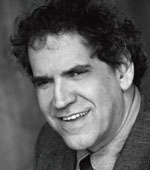By Rabbi Dr. Michael Leo Samuel

CHULA VISTA, California — George Floyd’s death was tragic. What made his death all the more tragic is that it was at the hand of a policeman. As a country, we need to do some serious soul-searching. I am reminded of the early 19th century Baptist preacher, C.H. Spurgeon (1834-1892), where he writes about Cain’s question: “Am I my brother’s keeper?”
“I put it to the consciences of many silent Christians, who have never yet made known to others what God has made known to them—How can you be clear from guilt in this matter? Do not say, “Am I my brother’s keeper?” for I shall have to give you a horrible answer if you do. I shall have to say, “No, Cain, you are not your brother’s keeper, but you are your brother’s killer.” If, by your effort, you have not sought his good, by your neglect you have destroyed him.”[1]
There have been too many cases where young black men died at the hand of the police. Digging deeper beneath the surface, there are questions I find myself asking about the death of George Floyd. Apparently, officer Derek Chauvin, who has been fired and arrested for Floyd’s death, had over a dozen offenses in which he acted violently against those persons he had arrested over a two-decade career. A nationally televised video showed a kneeling Chauvin with his knee pressed onto the back of Floyd’s neck even after Floyd was lying prone without resistance. This method is called a “neck restraint,” differentiated from a “choke hold” in that pressure was not applied directly to the windpipe.
The subject of the choke hold has a remarkable history. In 1982, there was the famous City of Los Angeles v. Adolph Lyons, 461 U.S. 95 (1982). The case involved bears a striking similarity to the George Floyd case. In 1976, four white police officers of the LAPD stopped Adolph Lyons for driving with a broken tail light. Lyons was unarmed and posed no threat. The officers drew their guns; one officer made him spread his legs and place his hands-on top of his head. After being frisked, Lyons put his hands down. That prompted one officer to grab his hands and slam them against his head. After Lyons complained that holding his car keys had caused him pain, a police officer put him in a choke hold until he finally lost consciousness. As he laid unconscious, face down with soiled underwear and blood flowing from his mouth, the officers waited till he was revived and ticketed him with a traffic citation and sent him on his way.
Seven years later, Lyons fought for justice and for damages against the LAPD choke hold policy. Apparently, from 1975 to 1983, sixteen people, including 12 African-Americans had been killed by the LAPD using choke holds. The Supreme Court took the case and ruled 5-4 that the choke hold was permitted.
Thurgood Marshall was the first African-American judge who served on the Supreme Court. He wrote in a dissenting view:
- “The city [of Los Angeles] instructs its officers that use of a choke hold does not constitute deadly force.” Nevertheless, “no less than 16 persons have died following the use of a choke hold by an LAPD police officer,” 12 of whom were black men. According to Justice Marshall, “the evidence submitted to the District Court established that, for many years, it has been the official policy of the city to permit police officers to employ choke holds in a variety of situations where they face no threat of violence.”[2]
I recall as a young yeshiva student how Rabbi Shlomo Cunin, the head of Chabad operations of the West Coast, was once having a noisy farbrengen. A neighbor called the police, and they placed Cunin (a big man who could have played linebacker for the Rams) in a choke hold, and he lost consciousness.
I knew of a Jewish man named Liberty back in the late sixties who also died from a choke hold. LAPD was notorious for using it. Nobody from his family pleaded for justice, it was swept under the carpet.
In July 2014, the New York Police Department arrested Eric Garner on suspicion of illegally selling single cigarettes on Staten Island. Officer Daniel Pantaleo placed Garner in a choke hold where Garner, like Floyd, cried out, “I cannot breathe!” eleven times before losing consciousness; he died.
One would think the liberal state of California would have banned choke holds decades ago, yet the State of California allows a similar technique to the chokeh old called, the “carotid restraint,” which squeezes the arteries instead of the windpipe.[3] Only on Tuesday, in the wake of George Floyd’s death, San Diego Police Chief David Nesbeit announced his department would henceforth ban the carotid restraint from its lists of approved methodologies for subduing a suspect.
There are many more examples we can point to, but the time has come for all communities—liberal and conservative to ban choke holds once and for all. It has proven to be a weapon of choice against the African Americans accused of crimes—often trivial crimes at that.
Let us work together in eliminating this practice. It will not solve the problem of bigotry in our society, which I might add is not limited to race, religion, or creed. But if we take this step, we can make amends for the death of George Floyd, who did not deserve to die.
NOTES
[1] C.H. Spurgeon and T. Carter, 2,200 Quotations: From the writings of Charles H. Spurgeon: Arranged topically or textually and indexed by subject, Scripture, and people (Grand Rapids, MI: Baker Books, 1995), 228. Vol. 33. 672.
[2] https://www.vox.com/2020/5/30/21274697/supreme-court-police-chokehold-george-floyd-derek-chauvin-lyons-los-angeles
[3] https://abc7news.com/grand-jury-police-daniel-pantaleo-chokehold/424502/